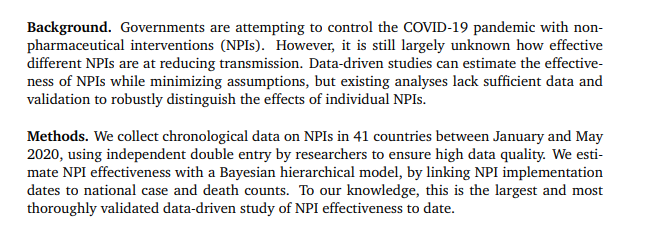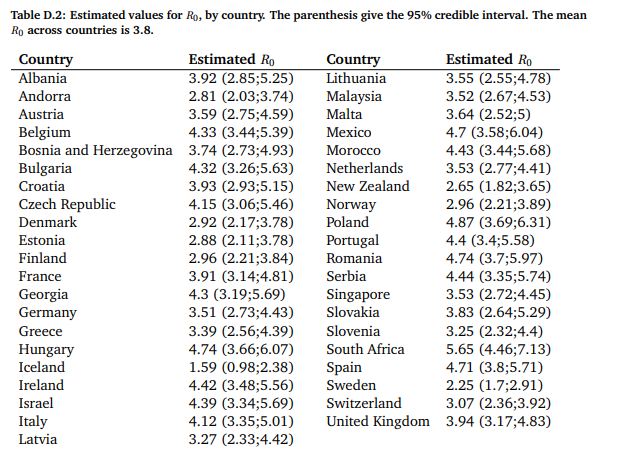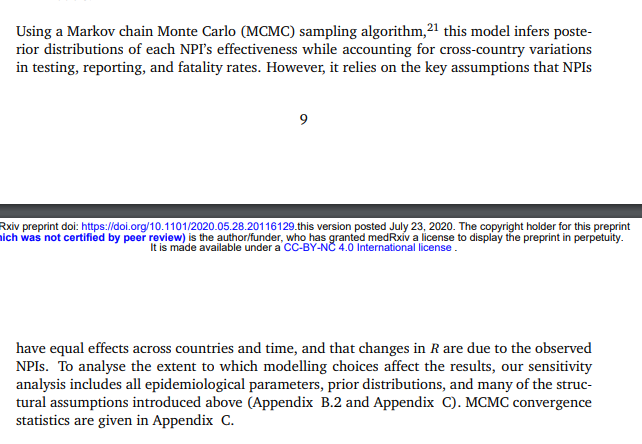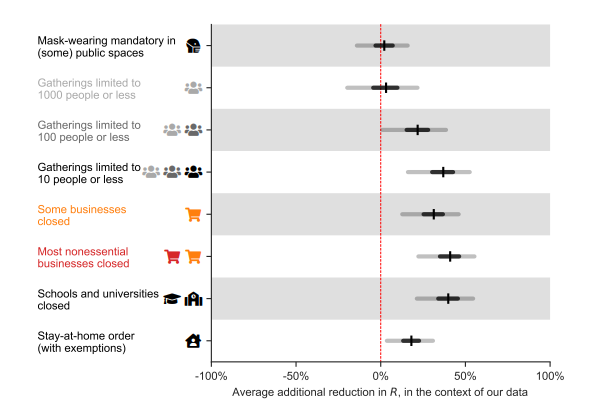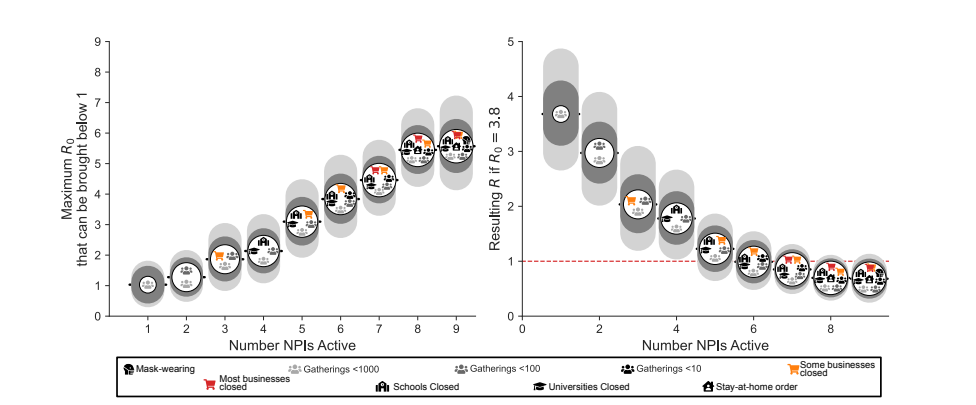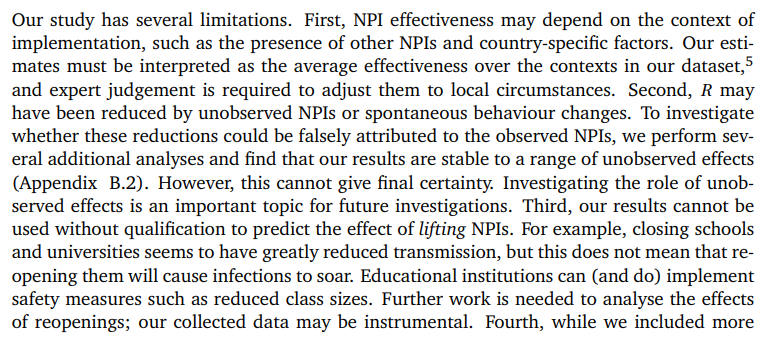This is a really careful, interesting, and thoughtful analysis of non-pharmaceutical interventions for COVID-19 and what works (i.e. masks, distancing etc) to control spread
A quick review thread 1/n https://www.medrxiv.org/content/10.1101/2020.05.28.20116129v3">https://www.medrxiv.org/content/1...
A quick review thread 1/n https://www.medrxiv.org/content/10.1101/2020.05.28.20116129v3">https://www.medrxiv.org/content/1...
2/n The paper does something relatively simple - marks when various policies were enacted in various places, and tracks deaths/cases of COVID-19 from that point
3/n The researchers then created two statistical models. The first inferred the reproductive number (Reff) at any point, using the cases/deaths data
The second associated Reff with the measures put in place to get an idea of what works
The second associated Reff with the measures put in place to get an idea of what works
4/n (FYI - my Bayesian stats are a bit rusty, so please correct me if I& #39;m misunderstanding, but that seems like the simplest explanation of what was done here)
5/n Quick epi reminder - the Reff of a disease is the number of people that each infected person will go on to infect, on average, at any moment in time
This is important, because it& #39;s what the results were presented in
This is important, because it& #39;s what the results were presented in
6/n So what did the paper find?
Here& #39;s the main results. The further to the right an intervention is, the better it was at reducing Reff (and thus reducing the spread of COVID-19
Here& #39;s the main results. The further to the right an intervention is, the better it was at reducing Reff (and thus reducing the spread of COVID-19
7/n To further explain, what this shows is the expected marginal benefit of each intervention
So, for example, say you& #39;ve already cancelled all gatherings over 100. Cancelling gatherings over 10 people will have an additional 36% reduction in the number of new cases
So, for example, say you& #39;ve already cancelled all gatherings over 100. Cancelling gatherings over 10 people will have an additional 36% reduction in the number of new cases
8/n Two very interesting points:
1. Mask mandates for public spaces had negligible impact on the spread of COVID-19
2. Stay at home orders similarly didn& #39;t have much additional benefit
1. Mask mandates for public spaces had negligible impact on the spread of COVID-19
2. Stay at home orders similarly didn& #39;t have much additional benefit
9/n On the other hand, as the authors note, closing schools and universities appears to have had a disproportionate impact on the spread of COVID-19
10/n The authors then estimate the interventions required to bring Reff down to 1:
- close schools
- close universities
- close some businesses
- limit gatherings to 10 people
- close schools
- close universities
- close some businesses
- limit gatherings to 10 people
11/n Some strengths of this trial are that they had multiple people rating the interventions and timing, the sample size was reasonably large, and they used a relatively objective outcome (Reff) to track efficacy
12/n Limitations are a bit more numerous, but two in particular I wanted to highlight:
- Hard to dissociate some interventions
- Some interventions not included
- Hard to dissociate some interventions
- Some interventions not included
13/n In particular, they found that while mask regulations appeared to have minimal benefit, it was hard to dissociate mask mandates from other interventions, so this might not be indicative of a lack of efficacy
14/n Indeed, many places only implemented these mandates after other regulations, so it could be that the MARGINAL (i.e. additional) benefit of masks on top of other social distancing regulations was small, but that by themselves the benefits could be larger
15/n Now, as ever it is hard to infer causal conclusions from studies like this (correlation=/=causation)
BUT
This is a careful, well-thought-out attempt to define the benefits associated with each intervention
BUT
This is a careful, well-thought-out attempt to define the benefits associated with each intervention
16/n For example, I& #39;d say a reasonable conclusion is that the marginal benefit of stay-at-home orders on top of other interventions is probably pretty small
Conversely, the benefit associated with closing universities is probably pretty big
Conversely, the benefit associated with closing universities is probably pretty big
17/n I should also note that I am not an expert in Bayesian statistical methods, so I might& #39;ve missed something important in terms of limitations of the models used
18/n Another worthwhile point is that I think that this paper is pretty good, but as with everything I could be wrong
Point out any errors I& #39;ve missed!
Point out any errors I& #39;ve missed!

 Read on Twitter
Read on Twitter